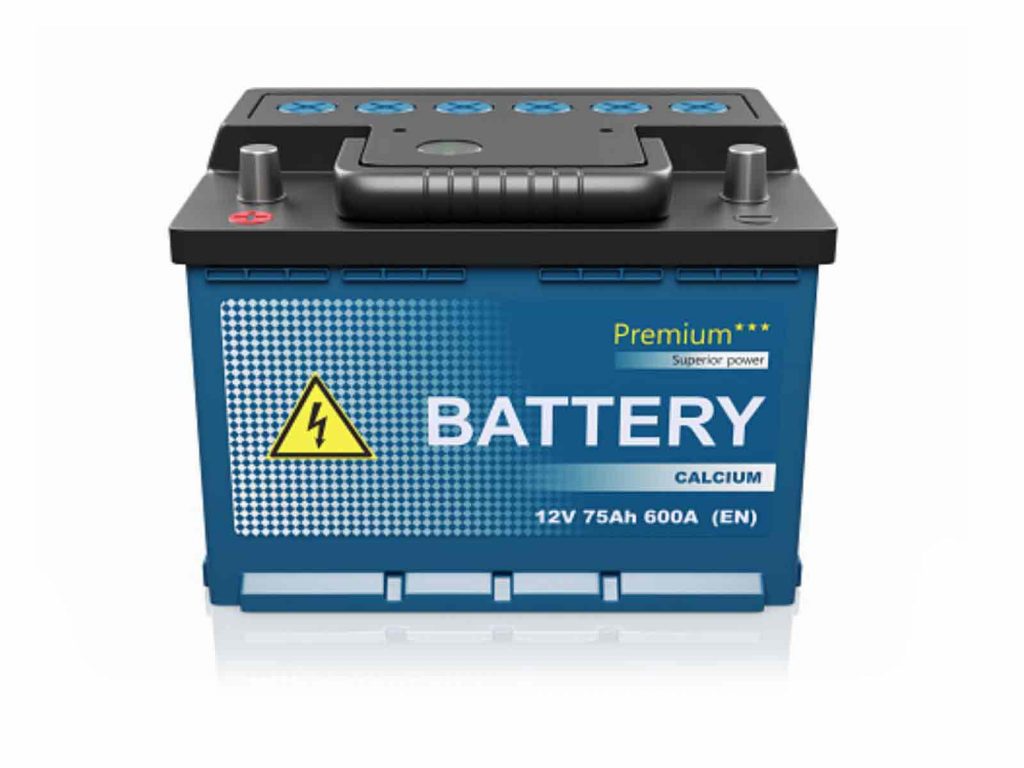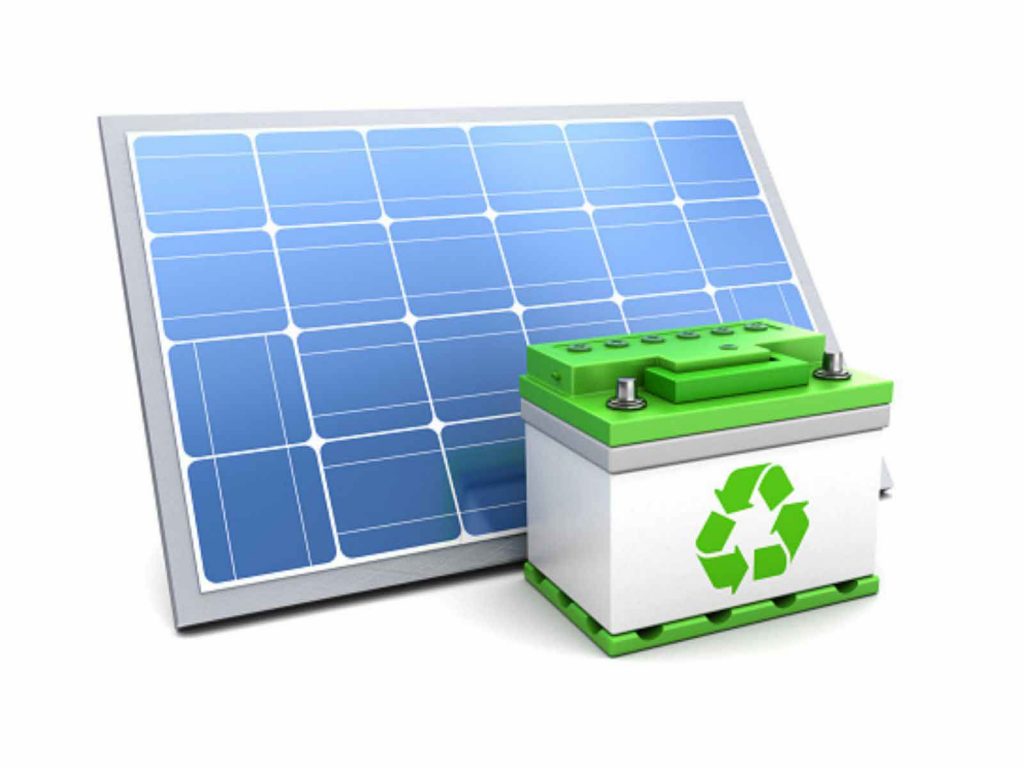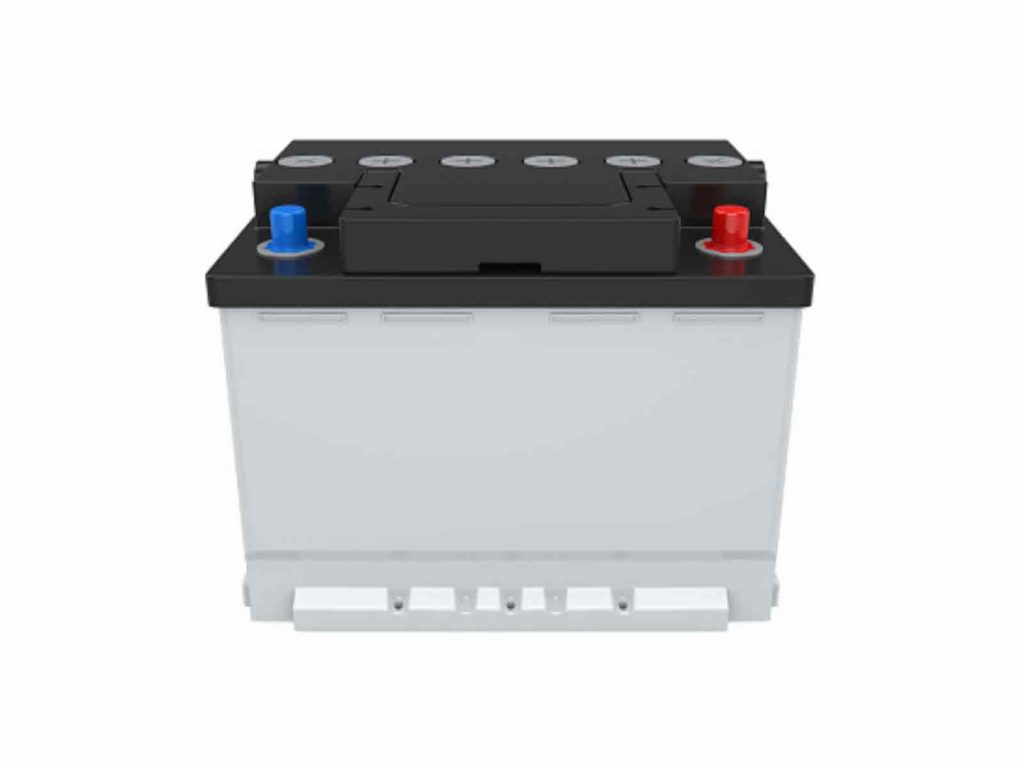Solar energy is only available during the daytime which means you can’t use it during the night. You, therefore, need to store this energy for later use at night and in overcast times when there is cloud cover and your panels are not producing as much.
Hence the need for batteries. Car batteries are cheap and readily available whether new or old used ones. You may therefore be tempted to use these batteries in your solar system. This is a bad idea and we’ll tell you why but this is not to say that it will not work.
The best batteries for storing solar energy are lithium deep cycle batteries. Deep cycle batteries can also be Lead Acid batteries which most car batteries are. But this is not the reason we are saying not to use them for solar power.

Can you use Car Batteries for Solar?
Yes, you can use car batteries for your solar system. If you are starting out or have old car batteries you want to use. They will work. But this will not be a great setup and may not last for long. Car batteries are the worst type of batteries you can go for when setting up your solar system
Car batteries fall under SLI batteries (Start Light Ignite) or starter batteries and are made to provide a burst of power in a short period to start an engine. They are not made for continuous use for long periods of time like deep cycle batteries.
A deep cycle battery on the other hand can be used continuously for hours and recharged over a fairly short period of time. This is because of how the batteries are designed. It may be difficult to tell them apart but car batteries have a large number of thin plates while deep cycle batteries have thicker and fewer plates.

Similarities between Car Batteries and Solar Batteries
Solar Batteries and Car Batteries are both rechargeable batteries that can be used interchangeably for each other functions. This is because they do share similarities.
Voltage
The voltage of a car battery and a solar battery will actually be the same. Most batteries have a voltage of 12V which is suitable for battery banks. In this aspect nothing much to differentiate the two. Car batteries can also be connected in series to increase the voltage to 24V or 48V.
Type
There are various types of rechargeable batteries you can find on the market. The main two will be Lead Acid and Lithium batteries. Lithium batteries is the new technology that is used almost everywhere including electric vehicles which we discuss later and some diesel cars. Lead Acid batteries are the traditional types of batteries you’ll find in most cars. Lead Acid batteries can also be divided into Wet Lead Acid batteries, AGM, and SLA batteries which don’t have an electrolyte.
Both these types of batteries will be found as starter batteries for engines and deep cycle batteries for renewable energy, trolling motors, and off-grid banks.
This is not the only thing that set them apart and why you should not use car batteries for deep cycle uses not just solar.

Differences and Similarities between Car Battery and Solar Battery
CCA
CCA stands for Cold Cranking Amps and this is where the power of the car battery lies. CCA is defined as the amps a battery can deliver in 30 seconds at 0°F. CCA rating for Car Batteries will be indicated in huge numbers as this is important when picking out a battery for starting an engine.
Cycles
Every time a battery is discharged and recharged this is called a cycle. Each battery has a Cycle life which is the number of times the battery can be charged and discharged. A car battery will have a low cycle life as it is not meant to be fully discharged and is only partially discharged to start the engine and then recharged again by the alternator.
Depth of discharge (DOD)
DOD is measured as a percentage of energy that can be pulled out of the battery during each cycle. A battery that is used for a battery bank needs to have deep discharge i.e can be discharged up to 80% of its capacity. This is what defines a deep-cycle battery. A deep cycle battery can last for up to 5000 cycles even when deeply discharged while it is not sustainable to discharge a car battery many times deeply.
Battery Rating
It will be ridiculous to say that Car batteries don’t have an Amp-Hour Rating. A Car battery is around 50 Ah but they usually don’t have it indicated. Batteries are rated in Ah (amp-hours). This is a measurement of the current output over time. Voltages are fixed but according to the type of battery. However capacity is relative to the type of Battery, this is usually printed on its side.
Using a Car Battery for Solar
The standard car battery is rated 12v batteries can be recharged with a maximum of 10 amps at 13.8 to 15 volts. The recommended float charging is one amp at (13.2 to 14v for some). You can check the recommended settings with the batteries manual. This can also vary depending on the type of battery; whether AGM, Gel, or SLA.
The issue with Car Batteries is that they are not made for deep discharge. You can only discharge up to 50% to maintain the life of the battery. Otherwise, a deep discharge will result in early death.
So what’s the best car battery for solar and renewable energy?
If you happen to come across an EV battery this will be as good as a battery for storing energy. Electric Vehicles use a rechargeable Lithium-ion battery that undergoes cycles of discharge when driving and charges when the car is plugged in. These batteries are made to undergo these cycles over long periods of time are usually have a warranty of over 5 years and can last from 10 to 20 years before being replaced.
Replacing your Lead Acid Battery with a Lithium Battery
If you go into the market looking to replace your lead acid batteries with Lithium batteries you will most likely come across LiFePO4 Batteries like the Antigravity Batteries. Lithium Iron Phosphate batteries are actually more common in renewable energy applications and energy storage as deep cycle batteries.
LiFePO4 Batteries can be more affordable and safer compared to other types of Lithium-ion batteries. They are used in race car batteries owing to the lighter weight and pulse discharge it can provide. The ratings may differ from the conventional car battery for example Car batteries usually have a CCA rating which you won’t find in these batteries. CCA or Cold Cranking Amps refers to the amperes a car battery can support for 30 secs at 0°F. They use a PHCA rating which uses a shorter during (around 3 to 5 sec)
What Lithium Batteries Do Electric Vehicles Like Tesla Use?
Lithium-Ion batteries in EVs use various lithium chemistry combinations to tweak performances. They are designed to provide high energy density while providing high power-to-weight ratio. Tesla batteries have some additions in their designs to increase the battery’s capacity.
Research and development is still being done to improve on these batteries for safer and better performance and also price which we discuss later on.
But generally, Lithium battery technology is truly advanced compared to the older Lead-acid batteries.
Let’s look at why.
Advantages of Lithium Batteries
High Energy Density
Lithium batteries can store more energy than Lead-acid batteries. Up to 4 times and a lead-acid battery with the same capacity can take up more than 10 times the space. Not only does this save space but it gives an electric car more range when running on Lithium batteries than it would on Lead Acid batteries. This is why most electric cars and even hybrids use lithium batteries.
Usable Capacity
You can discharge a lithium battery up to 90% without damaging the battery while you can only safely discharge a Lead Acid battery up to 50%. This means that a 100 ah Lithium battery is almost equal to a 200 ah Lead Acid battery in terms of draw.
Cycles
Battery lifespan is not measured in terms of lifespan but rather the number of cycles it can handle before it expires. A cycle is when you discharge a battery and then charge it back again. While Lead-acid batteries can last up to 1000 cycles Lithium batteries last up to 3000 cycles. This loosely translates to 3 years and 8 years but this can be less or higher depending on the number of cycles you use.
Less Weight
Lithium batteries with the same capacity as Lead Acid batteries can weigh up to 30% less. This is why they are used in portable devices like phones and laptops and bigger applications such as power stations for camping.
Mounting
Lithium batteries can be mounted in any direction as they do not have an electrolyte to spill. They can also withstand vibrations.
Rapid Charging
Lithium batteries can be quickly recharged as they do not go to the absorption stage of charging like lead-acid batteries and jump from bulk to float. While a typical 12V Lead-acid battery can take up to 10 hours to charge. It will take only 3 hours for a lithium battery to fully charge.
Constant Voltage
Lithium batteries maintain a high voltage even when highly discharged providing constant power throughout the charge cycle.
Efficiency
Lithium batteries are quite efficient when charging. They won’t heat up and can take up 99% of the charge from a charger.
Self Discharge
Lead Acid batteries will go dead even when left in storage as they discharge very quickly (up to 30%). You will need to maintain the charge with a trickle charger or make sure to recharge every month. This is not an issue with Lithium batteries as it can hold a full charge for even up to 1 year as it only experiences a 3% monthly discharge.
The downside to Lithium Batteries
Low Temperatures
Lithium batteries do not perform well in low temperatures. Discharging Lithium batteries in temperatures below freezing can cause issues. You may need to warm up the batteries in order to discharge them.
CCA Rating
As stated before CCA or Cold Cranking Amps is the amps you can draw from a battery for 30 seconds at 0°F. Lithium batteries will not have these ratings and these may cause an issue when replacing your starting batteries. However, this does not mean it will not support starting as lithium batteries can support a bigger draw than lead-acid in less time.
Price
The biggest impediment to upgrading to Li-Ion Batteries is the price. An H7 Lead Acid battery can cost less than $300 but this can be up to triple the amount when you go for Lithium.
Lithium batteries are better batteries that Lead Acid in more ways than one. They reduce the weight of your car and take up less space. They charge faster, provide more power, and last longer. However, price is the biggest impediment when it comes to using Lithium batteries for starting especially on Diesel vehicles where it does not power the running of the vehicle.
These batteries however will work great for RVs and solar and this is where the cost can be competitive with lead-acid. Because they last longer and you can discharge more you can replace a Lead Acid bank with a Lithium battery bank with 50% less in capacity and get the same power.
You are here